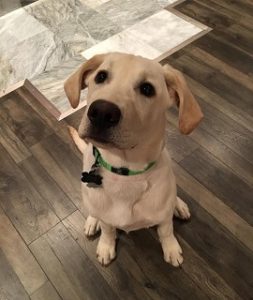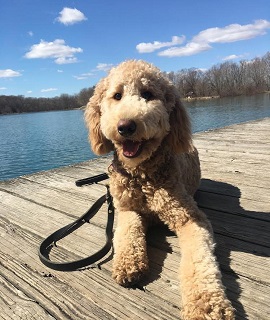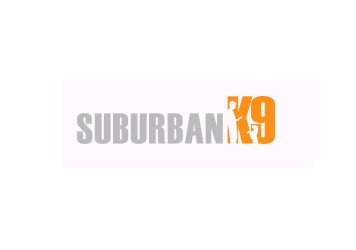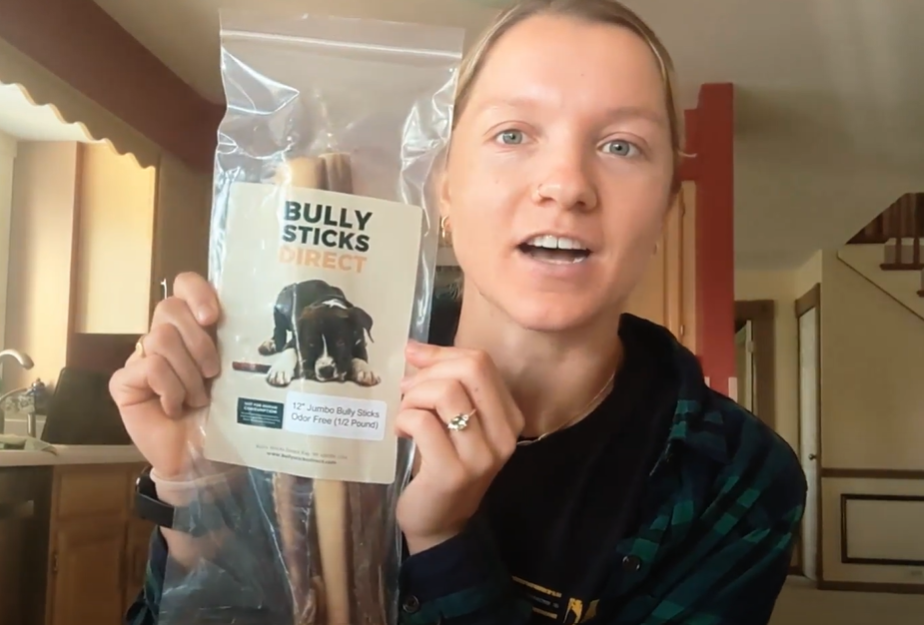Heel
Heel is the command utilized when walking with your dog and it’s the foundation of the training performed by Suburban K9. The majority of the time, Suburban K9 trained dogs have been taught to walk on the left side of their owner. While heeling, the dog’s ear should be even with the back of your heel, this helps reinforce that you are in control and takes the mental pressure off of your dog. As you walk focus on keeping a loose leash and use small tugs to keep the dog at your side. The tugs should be in the direction you want the dog to move. If the dog pulls ahead, tug back on the leash and say heel, if he goes to the left tug the leash to the right, etc. When you are walking the dog he should not be pulling regardless of the surrounding distractions. Any greetings with dogs or people should be initiated by you. Remember heel is a command that can be used in a vast array of situations to calm your dog. If more info is needed on this command, feel free to read the full “heel” article on our website or call us anytime!
Sit
Your dog has been taught to sit in the heel position at your side. When you are coming to a stop tell your dog to sit. If he sits make sure to praise him in a calm tone. If he doesn’t sit, give a quick tug straight up on the leash as you repeat the sit command. The thought with every obedience command is that a dog only needs to be told once. If they listen they are praised if they don’t, there is a small correction.
Your dog should sit directly at your side, not angled in order to see something else. If the dog sits but is ahead of you or angled a different direction, move him to your side. Do not move yourself to make it appear that your dog sat at your side. Guide the dog with the leash or gently spin them to the appropriate position.
Sit Stay
When your dog is in the sit position, tell him to stay. Only say the command once, and expect him to listen. You do not need to utilize a hand signal or repeat the command. If the dog gets up, tell him “no”. Take him back to the exact spot where he was told to stay, and give a correction for each command that he broke. The first correction would be straight up as you say “sit” and the second is up as you say “stay.” It is important that the dog is taken back to the exact spot where he was supposed to stay.
Down
With the dog in a sit position tell him to down while giving a point with your left hand, if he listens give him some calm praise. If he doesn’t, give a quick tug straight down as you repeat the command. Do not pull the dog to the ground! If more than one correction is needed, repeat as necessary. The dog should lay straight at your side, if he doesn’t, the correction is the same as when he doesn’t sit at your side.
Down Stay
The correction for a down stay is the same as for a sit stay with one additional correction. Your dog was told to sit, down and stay, so we correct for all three commands. You will take the dog back to the spot of the stay and give three corrections on the leash. Up as you say “sit,” down as you say “down,” and to the side as you say “stay.” One correction for each command broken.
Come
When calling your dog use the dog’s name followed by the word “Come”. Using the name first is important as it helps catch the dog’s attention. As soon as your dog acknowledges you verbally praise him until he reaches you. As he reaches you, tell him to sit. Once your dog sits you can give him physical praise. Your dog should always finish facing in front of you, not turned back towards distractions in the environment! If at any point you realize that your dog isn’t coming, tell him “No” and move calmly towards him. When you reach the leash, pick it up and start walking backward while facing the dog. With each step you take, give a quick tug (not a pull) towards you and say “Come” with each tug. How many tugs you make depends on how distracted he is. Once your dog is walking towards you nicely, give a final correction and tell him to sit. Make sure that your dog is facing you and sitting calmly after the corrections.
With all the corrections remember that it should be a quick tug on the leash, never pull or hold the leash taut for an extended period. A quick correction gets the point across, a pull invites more resistance. Also keep in mind that these corrections are for a trained dog, this is not how we teach a dog the command; it is how we reinforce.
If you have any questions about a command, please reach out to your trainer as soon as possible. They will be more than happy to clarify.









